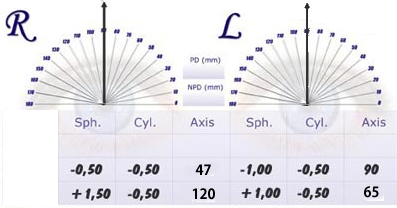Astigmatism Astigmatism is quite common. It causes difficulties in seeing fine detail. It is particularly noticable when people suffering from it view text. Studies have shown that about one in three people suffers from it. The prevalence of astigmatism increases with age. Although a person may not notice mild astigmatism, higher amounts of astigmatism may cause blurry vision, squinting, asthenopia, fatigue, or headaches. Astigmatism occurs when rays travelling along two planes that are perpendicular to each other have different image distances for a sharp focus. This means that if the image of a cross is viewed, the vertical and horizontal lines will be in sharp focus at two different distances from the eye. If the upright line of the cross is in focus the cross member will be blurred and vice versa. The term comes from the Greek α- (a-) meaning "without" and στίγμα (stigma), "a mark, spot, puncture"... in other words the image is not formed at one point in space, as it is different for both planes.
It can be often corrected by glasses with a lens that has different radii of curvature in different planes - cylindrical lenses, contact lenses, or refractive surgery. The prescription for the cylindrical lens will be a focal length and the angle of orientation of the plane that the prescription has to be applied to. The prescription for the cylindrical and spherical lens is given on the one sheet of paper.
Click here for a sample astigmatism question - A level past paper question. |
Follow me...
|







